
WIND AND STRUCTURES
Scope & Guideline
Innovative Insights: Shaping the Future of Structural Engineering
Introduction
Aims and Scopes
- Wind-Induced Structural Response Analysis:
Research on how structures respond to wind loads, including dynamic and static analyses, to enhance safety and resilience. - Aerodynamic Optimization Techniques:
Development of methods for improving the aerodynamic performance of structures, including buildings and bridges, to mitigate wind-induced loads. - Wind Load Characterization:
Studies focused on measuring and predicting wind loads on various structures, contributing to better design codes and standards. - Advanced Computational Methods:
Utilization of computational fluid dynamics (CFD) and other numerical techniques to simulate wind behavior and its effects on structures. - Field Measurement and Experimental Validation:
Conducting field studies and experiments to validate theoretical models and simulations, ensuring real-world applicability of research findings. - Multi-Hazard Vulnerability Assessment:
Integration of wind load considerations with other environmental hazards to assess the overall vulnerability of structures and infrastructure. - Innovative Structural Design Solutions:
Exploration of new design methodologies and materials that enhance the resilience of structures against wind effects.
Trending and Emerging
- Data-Driven Approaches and Machine Learning:
There is a growing trend towards utilizing artificial intelligence and machine learning techniques to predict wind loads and analyze aerodynamic performance. - Nonstationary Wind Analysis:
Research focusing on nonstationary wind conditions, including gusts and turbulence, is gaining traction, reflecting the need for more accurate modeling of real-world scenarios. - Resilience and Sustainability in Structural Design:
An emerging focus on designing structures that are resilient to extreme wind events and contribute to sustainability efforts in urban planning. - Integrated Multi-Hazard Assessment:
An increasing trend towards assessing the impact of multiple hazards, including wind, rain, and seismic activity, on structural integrity and safety. - Advanced Experimental Techniques:
The adoption of innovative experimental methods, including large-scale wind tunnel tests and real-time monitoring, is on the rise, leading to more robust and applicable findings. - Modeling of Extreme Weather Events:
Research on the impact of extreme weather events, such as hurricanes and tornadoes, on structural performance is becoming a significant area of interest.
Declining or Waning
- Traditional Wind Load Codes:
Interest in classical wind load codes appears to be waning as researchers increasingly focus on innovative approaches and modern computational techniques. - Static Wind Load Analysis:
The emphasis on purely static wind load analyses is decreasing, with a growing preference for dynamic analyses that account for real-time wind fluctuations. - Simplistic Structural Models:
There is a notable reduction in studies employing overly simplistic models for structural analysis, as more complex and realistic modeling techniques gain traction. - Generalized Wind Patterns:
Research centered on generalized wind patterns without specific regional or contextual considerations is declining in favor of localized studies that address unique wind characteristics. - Historical Case Studies:
The frequency of historical case studies related to wind effects on structures is diminishing, as contemporary experimental and simulation methods become more relevant.
Similar Journals
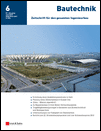
Bautechnik
Shaping the future of architecture and engineering excellence.Bautechnik is a premier academic journal in the fields of Building and Construction and Civil and Structural Engineering, published by ERNST & SOHN in Germany. With a history dating back to 1969 and a significant converged timeline through various years, this journal offers a rich repository of peer-reviewed research dedicated to advancing the principles, methodologies, and innovations within its domains. Bautechnik is currently ranked in the Q3 category for both building and construction, as well as civil and structural engineering, indicating its relevance and contribution to the academic community. Though it does not offer open access, its curated content is accessible to a global audience of researchers, professionals, and students striving for excellence in their fields. The journal aims to foster discussions and disseminate knowledge that impacts the future of construction, architecture, and engineering practices.
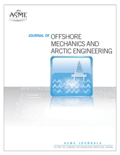
JOURNAL OF OFFSHORE MECHANICS AND ARCTIC ENGINEERING-TRANSACTIONS OF THE ASME
Bridging theory and practice in offshore mechanics.JOURNAL OF OFFSHORE MECHANICS AND ARCTIC ENGINEERING-TRANSACTIONS OF THE ASME (ISSN: 0892-7219; E-ISSN: 1528-896X) is a premier publication by the American Society of Mechanical Engineers (ASME), dedicated to advancing the field of offshore mechanics and Arctic engineering. Established in 1987 and running through 2025, this journal provides a crucial platform for researchers and practitioners to disseminate their findings in a rapidly evolving sector faced with unique challenges related to energy, ocean engineering, and mechanical engineering. With a notable impact reflected in its Scopus ranks—#224 in Mechanical Engineering and #39 in Ocean Engineering—the journal holds a significant position in the academic community, publishing high-quality peer-reviewed articles that span innovative technologies, safety, and environmental considerations in offshore and Arctic contexts. While currently not adopting an Open Access model, its strategic focus and rigorous standards make it an essential resource for students, professionals, and researchers passionate about expanding knowledge in these critical engineering domains.

Magazine of Civil Engineering
Pioneering Solutions for Modern Civil Engineering ChallengesMagazine of Civil Engineering, published by ST-PETERSBURG STATE POLYTECHNICAL UNIVERSITY, is a prominent open access journal dedicated to the field of civil and structural engineering. With an ISSN of 2712-8172 and E-ISSN 2071-0305, it serves as a vital platform for disseminating high-quality research, innovative methodologies, and current trends in building and construction. Since its inception in 2010, the journal has embraced open access, ensuring broad visibility and accessibility for its contributions to the academic community. The magazine holds a respectable position in the academic hierarchy, ranked in the Q3 quartile for both Building and Construction and Civil and Structural Engineering categories as of 2023. It is indexed in Scopus, amplifying its societal impact and reach with a rank of #114/223 in Building and Construction and #224/379 in Civil and Structural Engineering. Researchers, professionals, and students alike are encouraged to engage with the cutting-edge studies presented in the magazine, contributing to the advancement of knowledge and practice within the civil engineering domain.

Electronic Journal of Structural Engineering
Elevating Engineering Standards through Open Access ScholarshipThe Electronic Journal of Structural Engineering (ISSN: 1443-9255), published by EJSE INT LTD, serves as a vital platform for disseminating innovative research and developments in the field of structural engineering. Since its inception in 2001, the journal has evolved to embrace an Open Access model starting in 2022, ensuring that cutting-edge findings are freely accessible to researchers, professionals, and students worldwide. Housed within the reputable Department of Infrastructure Engineering at the University of Melbourne, Australia, the journal focuses on a wide range of topics related to civil and structural engineering, positioning itself within the Q4 category on the 2023 Scopus rankings. While its H-index and detailed scope data are currently unavailable, the journal's commitment to quality research is evident through its continuous publication and engagement with the global academic community. With significant implications for contemporary engineering practices, The Electronic Journal of Structural Engineering not only fosters scholarly discourse but also encourages practical applications of structural engineering advancements.
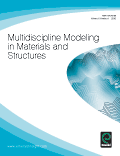
Multidiscipline Modeling in Materials and Structures
Bridging disciplines for a deeper understanding of materials and structures.Multidiscipline Modeling in Materials and Structures, published by EMERALD GROUP PUBLISHING LTD, serves as a vital platform at the intersection of diverse fields including materials science, mechanical engineering, and modeling and simulation. Since its inception in 2005, this journal has gained recognition for its commitment to advancing knowledge and innovation within these disciplines, boasting a commendable Q3 categorization across multiple fields as of 2023. With a robust Scopus ranking that places it in the top 60th percentile for both mechanical engineering and mechanics of materials, it stands as a credible source for researchers and practitioners seeking to stay informed on the latest methodologies and applications. The journal emphasizes the importance of collaborative approaches to complex problems in materials and structural analysis, aiming to foster interdisciplinary dialogue and generate impactful research outcomes. Although currently not open access, the journal offers subscription options that ensure access to cutting-edge studies and critical reviews relevant to professionals and students alike. Engaging with this journal not only enriches one’s understanding of the field but also contributes to the ongoing discourse and development of innovative solutions in materials and structural modeling.
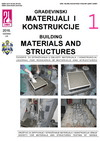
Gradevnski Materijiali I Konstrukcije-Building Materials and Structures
Connecting researchers to revolutionize construction methodologies.Gradevnski Materijiali I Konstrukcije - Building Materials and Structures is a premier open-access journal dedicated to advancing the field of construction materials and structural engineering. Published by SOC MATERIALS & STRUCTURES TESTING SERBIA, this journal provides a platform for researchers, professionals, and students to share their innovative findings and developments in building materials. With a commitment to open-access since 2012, it fosters unrestricted availability of research for a wider audience, encouraging collaboration and knowledge dissemination. The journal features a diverse range of topics, including material testing, structural integrity, and sustainable construction practices, making it a vital resource for those engaged in the design and analysis of structural components. By fostering the advancement of research and practice in this crucial sector, Gradevnski Materijiali I Konstrukcije plays an essential role in shaping the future of construction and material science.
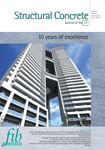
Structural Concrete
Innovative Insights for Structural ExcellenceStructural Concrete, published by ERNST & SOHN, is a premier journal dedicated to the field of Civil and Structural Engineering, focusing on innovative research and advancements in concrete materials and technologies. With an impressive impact factor and a consistent ranking in the Q1 category of both Building and Construction and Civil and Structural Engineering, the journal stands as a vital resource for researchers, professionals, and students alike. It is indexed with notable Scopus ranks, underscoring its significance within the academic community. The journal spans a comprehensive scope (from 2001 to the present) that encompasses diverse topics related to the behavior, design, and application of structural concrete. Although not an open access publication, it offers valuable insights and cutting-edge knowledge that contribute to the ongoing evolution of construction practices and materials science. Structural Concrete is an essential platform for sharing pioneering findings and fostering collaboration within this dynamic field.

Mechanical Sciences
Illuminating the future of mechanical engineering and beyond.Mechanical Sciences is a prominent open-access journal published by COPERNICUS GESELLSCHAFT MBH since 2010, dedicated to advancing the field of mechanical engineering and its multidisciplinary applications. Operating from Göttingen, Germany, the journal has established a vital platform for researchers and professionals alike, facilitating the sharing of original research, reviews, and innovative methodologies across various domains, including civil and structural engineering, control and systems engineering, fluid flow, industrial engineering, and mechanics of materials. With a current impact factor placing it in the Q3 category across several engineering disciplines, Mechanical Sciences provides a valuable resource that not only highlights emerging trends but also contributes to the ongoing discourse within the engineering community. The journal's commitment to open access ensures that its content is widely accessible, encouraging collaboration and knowledge sharing among students, educators, and industry experts worldwide. As it continues to converge towards 2024, Mechanical Sciences remains an essential reference for anyone invested in the mechanics of engineering and related fields.

Bulletin of Earthquake Engineering
Leading the charge in earthquake resilience research.The Bulletin of Earthquake Engineering is a premier journal published by Springer, dedicated to the field of earthquake engineering and its related disciplines. Established in 2003, this esteemed journal has evolved into a critical platform for disseminating cutting-edge research in Building and Construction, Civil and Structural Engineering, Geophysics, and Geotechnical Engineering and Engineering Geology, earning a distinguished position in the Q1 quartile across these categories. With an impressive ranking in Scopus, notably a rank of #8 in Earth and Planetary Sciences for Geophysics, the journal addresses urgent challenges in the mitigation of seismic risks and the enhancement of structural resilience. Researchers and practitioners benefit from a wealth of peer-reviewed articles, insights, and methodologies relevant to modern engineering practices aimed at improving safety and sustainability in earthquake-prone regions. The Bulletin of Earthquake Engineering embodies a commitment to advancing knowledge and practice in earthquake resilience, making it an invaluable resource for academics, industry professionals, and rising scholars alike.
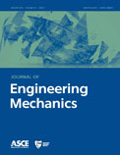
JOURNAL OF ENGINEERING MECHANICS
Connecting Theory and Practice in Engineering MechanicsJOURNAL OF ENGINEERING MECHANICS, published by the ASCE - American Society of Civil Engineers, stands as a premier interdisciplinary journal in the field of engineering mechanics. With an impact factor reflecting its vital contributions—placing it in the Q1 category for both Mechanical Engineering and Mechanics of Materials—this journal has established itself as a critical resource for researchers and professionals alike. Since its inception in 1981 and continuing through 2024, it has provided a platform for the dissemination of high-quality research, emphasizing innovative methodologies and cutting-edge findings. The journal's ranking in Scopus further underscores its significance, with impressive standings in the 79th and 77th percentiles of its respective categories. As a vital resource for students and professionals aiming to stay abreast of developments in engineering mechanics, it remains committed to fostering rigorous scientific exploration and practical applications within the field.